Ecosystem Health Research Milestones
On this page, view by decade:
Ecosystem-focused research develops methods that measure ecosystem goods and services. Ecosystem goods and services produce the many life-sustaining benefits we receive from nature—clean air and water, fertile soil for crop production, pollination, and flood control. These ecosystem services are important to environmental and human health and well-being. Here are some of our most important research achievements.
2020s
2024-Better Understanding of Forests and Tree Species

EPA scientists examined over 20 years of data to understand how the health of forests changed while air quality has been improving in the US – primarily measuring the impacts of decreases in the deposition of sulfer and nitrogen.
Nitrogen Sensitivity of Tree Species
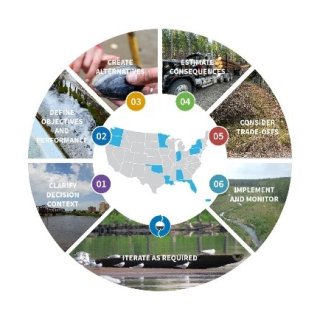
2024-Ecosystem Services StoryMaps
EPA StoryMaps work together to showcase real-world examples of U.S. communities that have applied ecosystem services and structured decision making concepts to address community resilience issues. The StoryMaps offer practical strategies users can apply in their own municipalities to make decisions with a focus on collective well-being of community members and sustainability of all services.
Ecosystem Services Community Case Study & Structured Decision Making StoryMaps
2023-One Health
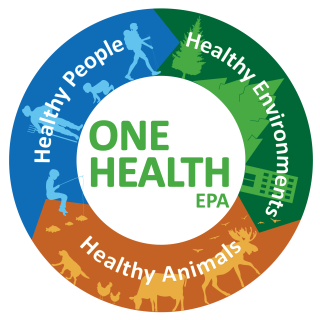
In FY23, the goal to establish EPA as a One Health Agency like our federal partners (CDC, FDA, etc.) and raise awareness both internally and externally was expanded upon. The Agency created a One Health website, developed a SWOT analysis, conducted outreach to the EPA Tribal Science Council and regional offices, created an Agency-wide mass mailer and social media campaigns to promote One Health Day and One Health Awareness Month, analyzed and shared informational presentations on the National Academies of Sciences, Engineering, and Medicine’s “Transforming EPA Science to Meet Today's and Tomorrow's Challenges” March 2023 report, and incorporated One Health connections in ORD EPA Research Partner Support Stories map.
2023 - Lake Explorer II Sampling in The Great Lakes
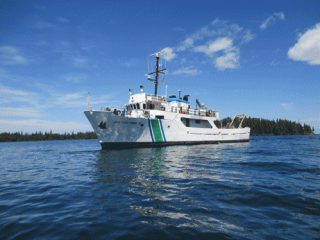
More than 40 million people rely on the Great Lakes for clean drinking water, around 12% of the total US population. EPA scientists perform sampling and monitoring to determine water quality and coastal conditions in The Great Lakes based on a number of indicators including nutrient concentrations, algae, and zooplankton communities, as well as the diversity of the Great Lakes microbial community. This year, EPA scientists led ecological monitoring of Lake Ontario in the Lake Explorer II boat, addressing three priority areas: changing food web structure, movement and bioaccumulation of critical pollutants, and the role of nutrient inputs to support outbreaks of nuisance algae. The collaborative, lake-wide sample collection design facilitates comparison to previous field years and expands the spatial coverage of the data set to improve the quality of information provided to the Lake Ontario Partnership.
2022-Teaming up to help restore coral reefs
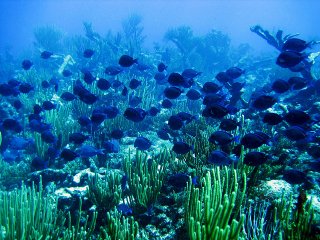
EPA researchers and colleagues from The Nature Conservancy, the National Oceanic and Atmospheric Association (NOAA), and elsewhere to create A Manager’s Guide to Coral Reef Restoration Planning and Design—a tool to help reef managers plan, design, and implement projects aimed at restoring the health of coral reef ecosystems. The Guide details a six-step framework to identify and prioritize restoration needs and goals, select appropriate interventions, develop and implement an action plan, and monitor and evaluate project outcomes.
2022-EPA Researchers Make Microplastic Identification More Accessible
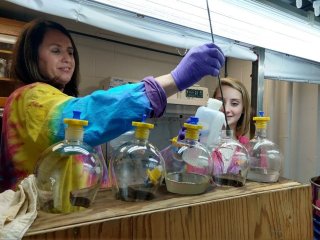
Given their variety in size and shape, there's no "one-size-fits-all" approach for measuring microplastics in the environment. EPA researchers developed a new method for identifying and counting microplastics in environmental sediment samples that makes microplastics research more standardized and accessible.
Science Matters Newsletter: Making Microplastic Identification More Accessible
2022-EPA Researchers Conduct Uptake and Toxicity Studies to Find Out How Pesticides Affect Frogs

Frogs have unique contamination routes and can be directly and indirectly exposed to pesticides throughout different stages of their life cycles. To help address this problem, EPA scientists conducted multiple studies over a 10-year period to better understand how pesticides affect juvenile and adult frogs.
2022-EPA Develops User-Friendly Workbook to Assist Coral Reef Managers

EPA released an easy-to-use workbook to support coral reef managers developing action plans tailored to specific reef locations and restoration goals. This workbook is a supplement to the report A Manager’s Guide to Coral Reef Restoration Planning and Design.
2021 - What Killed the Eagles? EPA Researchers Help Solve 25+ Year Mystery

For many years, scientists struggled to understand the cause of a disease that leads to significant physical impairment for bald eagles. Scientists and academic researchers helped identify that the birds had ingested a neurotoxin produced by a species of cyanobacteria, which grows on an invasive aquatic plant.
What Killed the Eagles? EPA Researchers Help Solve 25+ Year Mystery
2021 - EPA Advances Coral Reef Restoration
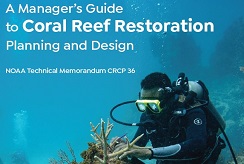
Researchers collaborated with The Nature Conservancy, NOAA, and other partners to develop a technical guide to help reef managers plan, design, and implement restoration projects. The publication presents a six-step framework to identify and prioritize the needs and goals of a restoration project, select appropriate interventions, develop and implement an action plan, and monitor and evaluate project outcomes.
A Manager’s Guide to Coral Reef Restoration Planning and Design
2021 - EPA Marks Two Decades of Ecosystem Services Research
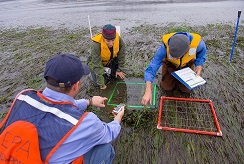
EPA researchers published an overview of two decades of ecosystem services (ES) research, characterizing a large portfolio of work through an assessment of approximately 150 peer-reviewed publications, technical reports, and book chapters. The goal of this work is to assist with an operational understanding of the final ES conceptual framework and state of science for a number of ES elements, and an introduction to some ES tools, models, and frameworks.
2021 - EPA Releases Final Ecosystem Goods and Services Metrics Report
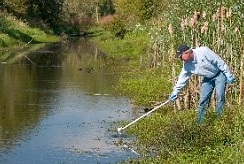
EPA released the final report, which provides decision-makers with a powerful guide for identifying, considering, and sustaining important environmental benefits for their communities. The report specifies more than 200 metrics for 45 different ways in which people directly benefit from ecosystems across seven ecosystems: coral reefs, estuaries, lakes, rivers and streams, wetlands, agricultural lands, and forests.
Final Ecosystem Goods and Services (FEGS) Metrics Report | US EPA.
2021 - EPA Releases Final Ecosystem Goods and Services Scoping Tool

To complement the Final Ecosystems Goods and Services (FEGS) Metrics Report, researchers also released the FEGS Scoping Tool—an online resource to help communities incorporate the benefits of local ecosystems into their environmental decisions and planning. Designed as a first step in the decision-making and planning process, it helps decision-makers take a holistic and comprehensive view of the ecosystem services that may be relevant to their projects.
Final Ecosystem Goods and Services (FEGS) Scoping Tool | US EPA.
2021 - EPA Helps Communities Maximize the Benefits of Habitat Restoration
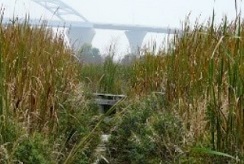
EPA researchers released their final report on a Health Impact Assessment conducted in partnership with the Minnesota Department of Natural Resources and the City of Duluth, Minnesota, for proposed habitat restoration projects in the Kingsbury Bay-Grassy Point areas along the St. Louis River estuary. The report summarizes main findings and recommendations for harnessing the benefits of the ecosystem and maximizing the potential public health benefits such as improved water habitat and quality, outdoor recreation, and cultural resources.
EPA Health Impact Assessment Case Studies
2020 - EPA Research Taps Ecosystems for Healthy and Resilient Communities

In 2020, EPA researchers released a report presenting metrics and principles related to ecosystem services—the ways in which natural ecosystems contribute to healthy and sustainable communities. The report and related research provide a robust, step-by-step resource for tracing the links between natural ecosystems and human well-being and a framework for analyzing how changes to ecosystems impact human welfare.
National Ecosystem Services Classification System (NESCS) Plus
2010s
2018 - EPA Publishes the LakeCat Dataset
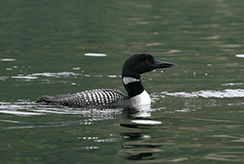
EPA publishes the Lake-Catchment (LakeCat) dataset containing extrapolated measurements for 380,000 lakes in the conterminous U.S. The data are derived from measurements made every five years under the National Lakes Assessment and help states to identify lakes and reservoirs potentially in need of restoration.
2016 - EPA Publishes the StreamCat Dataset

EPA publishes the Stream-Catchment (StreamCat) dataset, which includes over 500 natural and anthropogenic watershed measurements representing 2.6 million streams in the conterminous U.S. The data are extrapolated from measurements made every five years under the National Rivers and Streams Assessment and help states identify streams potentially in need of restoration.
National Rivers and Streams Assessment
2016 - EPA Publishes the National Wetland Condition Assessment Report

EPA publishes the National Wetland Condition Assessment Report, providing the first ever national report on the quality of wetlands. This first baseline report, based on an assessment completed by EPA in 2011, will now allow changes in wetland condition to be tracked over time. The data allow wetlands to be compared with others in their regions, revealing local or widespread trends in condition. They also provide an opportunity to explore patterns in wetlands in their ecological differences at a continental scale.
What is the National Wetland Condition Assessment?
2016 - EPA Releases the SeqAPASS Screening Tool
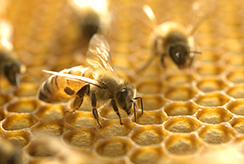
EPA releases the fast, online screening tool, Sequence Alignment to Predict Across Species Susceptibility (SeqAPASS), which can be used to consistently predict species susceptibility of chemical exposure. SeqAPASS has contributed to EPA’s support for the National Strategy to Promote the Health of Honey Bees and Other Pollinators. This tool is nationally and internationally recognized as a valuable cross-species toxicity estimation tool.
Sequence Alignment to Predict Across Species Susceptibility
2015 - EPA Publishes Protocols for Assessing Sediment-Associated Contaminants
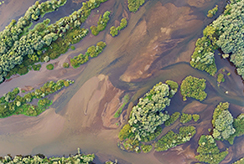
EPA publishes the first standardized protocols for assessing the toxicity of sediment-associated contaminants to benthic organisms. These methods are used extensively in EPA regulatory programs and National Pollutant Discharge Elimination System permitting as well as for pesticide registration and Superfund site assessments.
Tools and Methods for Contaminated Sediments Research
2015 - EPA Demonstrates New Sampling for Detection of Invasive Species

EPA demonstrates sampling designs and associated technologies for the early detection of aquatic invasive species in the Great Lakes. The resulting detection network helps fulfill EPA’s obligation to provide the science to protect water quality under the Great Lakes Water Quality Agreement with Canada.
Detecting and monitoring aquatic invasive species
2015 - EPA Publishes the Water Connectivity Report
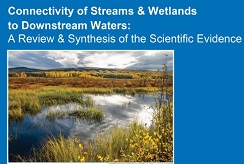
EPA publishes a report providing the technical basis for clean water rulemaking by the Agency. The report summarizes the current understanding about the connectivity and mechanisms by which streams and wetlands affect the physical, chemical and biological integrity of downstream waters.
2014 - EPA Reports on the Effects of Mining on Bristol Bay Fisheries
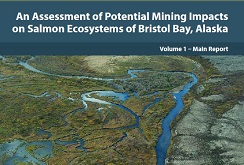
EPA publishes a report to explain how future large-scale mining may affect water quality and the Bristol Bay salmon fisheries. Research has contributed to understanding of the environmental impacts on salmon populations.
An Assessment of Potential Mining Impacts on Salmon Ecosystems of Bristol Bay, Alaska
2014 - EPA Releases EnviroAtlas
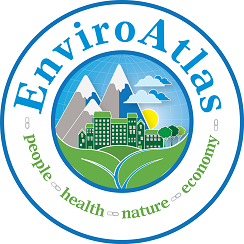
EPA releases EnviroAtlas, a GIS-based resource that provides geospatial data, easy-to-use tools, and other resources related to ecosystem services, their stressors, and human health. This free, robust resource is among the first tools to help environmental managers and others explore and visualize the connections between natural ecosystems and healthy, stainable communities.
2012 - EPA Releases the Eco-Health Relationship Browser
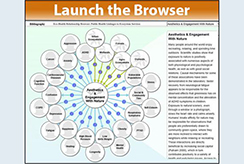
EPA releases the Eco-Health Relationship Browser to help communities and others better account for and protect the benefits they derive from natural ecosystems. The browser is designed to increase understanding of the nation’s ecosystems, the services they provide, and how those services benefit public health and well-being.
EnviroAtlas Eco-Health Relationship Browser
2011 - EPA Publishes an Assessment of Appalachian Coalfields
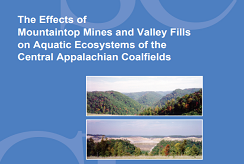
EPA publishes an assessment, which informs guidance and regulatory activities taken by EPA to protect waters in Appalachia.
2000s
2006 - EPA Studies the State of the Great Rivers

EPA conducts the first ever ecological condition assessment of the Great Rivers of the Mississippi River basin with state partners, the Ohio River Valley Sanitation Commission, and the US Geological Survey.
EPA Collaborates with State and Federal Partners to Study the State of the Great Rivers
2003 - EPA Begins Work on the Report on the Environment

EPA began a bold initiative to assemble, for the first time, the most reliable available indicators of national environmental and health conditions and trends that are important to EPA’s mission. The Agency released the Report on the Environment and a companion report in 2008. EPA continues to update the report that provides the best available indicators of national trends in the status and condition of the U.S. environment and human exposure and health.
EPA's Report on the Environment (ROE)
2001 -EPA Co-Authors the First National Climate Assessment

EPA co-authors the first National Climate Assessment, which was coordinated by the United States Global Change Research Program. The report provides a comprehensive assessment on climate change impacts in the United States. EPA co-authored subsequent National Climate Assessments in 2009, 2013, and 2018.
2000 - EPA Studies the Impacts of Hypoxia on the Gulf of America
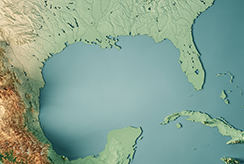
EPA assists the Gulf of America Alliance to characterize Gulf hypoxia (low oxygen levels) and its impacts on the Gulf of America. In 2002, researchers initiated Gulf of America monitoring with the first of 13 hypoxia surveys, which led to the development of a hypoxia model for the Gulf. In 2018, EPA developed and applied tools to quantify the hydrodynamic and biogeochemical processes controlling oxygen dynamics in the Gulf of America for development and implementation of effective strategies to reduce Gulf of America hypoxia.
Mississippi River/Gulf of Mexico Hypoxia Task Force
2000 - EPA Completes the First Year of the Coastal 2000 Monitoring Effort

EPA completes the first year of the Coastal 2000 monitoring effort conducted in conjunction with coastal states. This five-year effort led by the Office of Research and Development surveyed the condition of the national’s coastal resources using a common set of ecological indicators and assessment methods and working in partnership with all 24 coastal states and Puerto Rico.
Coastal Communications: National Coastal Assessment--Coastal 2000
2000 - EPA Releases a Web-based ECOTOX Database

EPA releases a web-based version of the ECOTOX database that contains information on the toxic effects of chemicals on aquatic animals, plants, and wildlife. In 2018, EPA released an updated version, which provides researchers, risk assessors and decision makers access to nearly a million records of environmental toxicity data for approximately 12,000 chemicals and 13,000 species. EPA uses the data to evaluate substances and develop aquatic life ambient water quality criteria for toxics.
ECOTOX 5.0 Improves Access to Chemical Information on Ecological Species
1990s
1998 - EPA Publishes Guidelines for Ecological Risk Assessment

EPA published the Guidelines for Ecological Risk Assessment that outline the ecological risk assessment process including problem formulation, analysis, and risk characterization. The work improved risk assessments by EPA and informed the public and the regulated community on the Agency’s approach to ecological risk assessment.
EPA's Guidelines for Ecological Risk Assessment
1991 - EPA Begins the Northeast Lake Survey

EPA begins the Northeast Lake Survey to assess regional patterns of lake-trophic conditions in the northeastern United States using a probability sampling design. This approach permitted investigators to sample only a small fraction of the total lake population, while inferring the sample conditions to lakes throughout the Northeast.
EPA Science Matters Newsletter: Climate Change and Watersheds: Exploring the Links
1980s
1989 - EPA Initiates the Environmental Monitoring and Assessment Program

EPA initiates and leads the Environmental Monitoring and Assessment Program, documenting for the first time the status and trends of the nation’s ecological resources. The first stream survey using common indicators and design was completed in 1994. In 2000, a pilot program was implemented to monitor and assess water quality in streams and rivers in the western U.S. using common ecological indicators and survey design.
The Environmental Monitoring and Assessment Program (EMAP)
1970s
1974 - EPA Conducts Research on the Pesticide Mirex
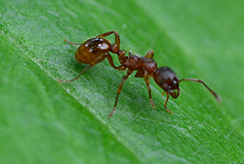
EPA conducts critical research on the pesticide, Mirex, which was being applied throughout the Southeast to combat fire ants. Results with aquatic organisms indicated significant adverse effects to crustaceans and bioaccumulation in higher predatory species ultimately contributing to EPA’s ban of this pesticide.
